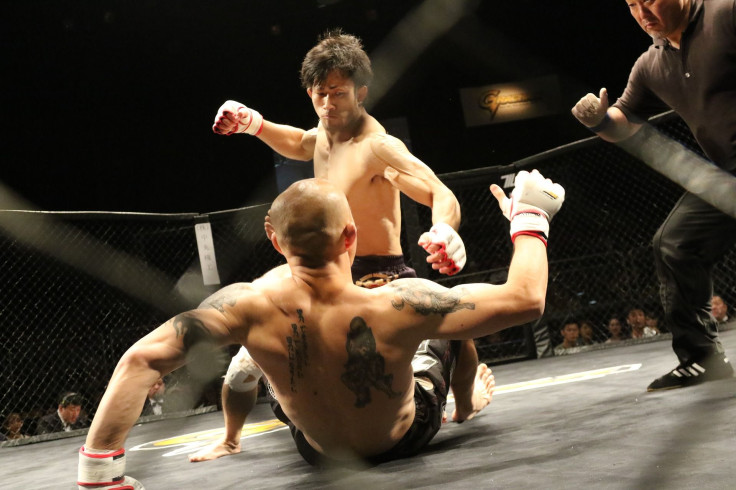Study: Human Body Evolved To Either Run Or Fight

Human bodies evolved to be good at running or at fighting, but not both, a new study suggests. And it may not have anything to do with muscle mass.
Researchers studied mice as they defended their territory and as they were running on a treadmill to determine that better fighters were poorer runners, according to a study in the Journal of Experimental Biology. The rodents that were better at defending themselves, a group referred to as “territory-holding males,” used up more oxygen while running, as compared to the ones who did not control territory.
Using up more oxygen means their bodies were not operating as efficiently while they were running.
Read: Child Fossil Shows How the Human Skeleton Evolved for Running
“Both economical locomotion and physical fighting are important performance traits to many species because of their direct influence on components of Darwinian fitness,” the study says, referring to how well a living thing reproduces and passes on its genes to the next generation.
It’s a key part of evolution, because in theory the most capable members of a species will be able to produce more offspring, perhaps because they survive longer than others or manage to win over more mates, and thus pass on their superior genes. Over time, the superior genes push out the less advantageous ones — a victory that advances the evolution of the species.
The ability to fight and control territory plays into that process, as does running.
“Locomotion represents a substantial portion of the total daily energy budget of many animals,” the study says. Meanwhile, “fighting performance often determines individual reproductive fitness through the means of resource control, social dominance and access to mates.”
This research was looking to see if traits that made a mouse a better runner or a better fighter would “diminish performance in the other,” like an evolutionary tradeoff.
The idea has been suggested before, and the new results back it up. The mice in this experiment had space in their enclosures to fight to control their territory, which contained females, or to retreat from the danger. The ones that defended their territory performed worse on treadmill running tests performed before and after the fights.
But what do mice have to do with humans? Mice have long been used in experiments that relate to humans. Apart from the ease of handling them, they have a lot in common with humans on a genetic, biological and behavioral level, and can be affected by many of the same diseases as humans. Therefore, results in mouse studies can translate to human situations, or at least provide insight into them.
In the case of this fight or flight experiment, “Humans are also creatures that employ both endurance-based and aggression-based behaviors, so the results give a clue as to how the trade-offs may have shaped our evolution,” the University of Utah explained.
Read: Why Are Chimps Stronger Than Humans? It’s About Power vs. Endurance
Although among human athletes many of the best fighters and the best runners have different body types, that difference may not have anything to do with this evolutionary tradeoff — at least in the laboratory mice.
“Good fighters and good runners had about the same body mass,” the university noted. “More subtle physiological differences between the two groups are likely at work.”
© Copyright IBTimes 2024. All rights reserved.











